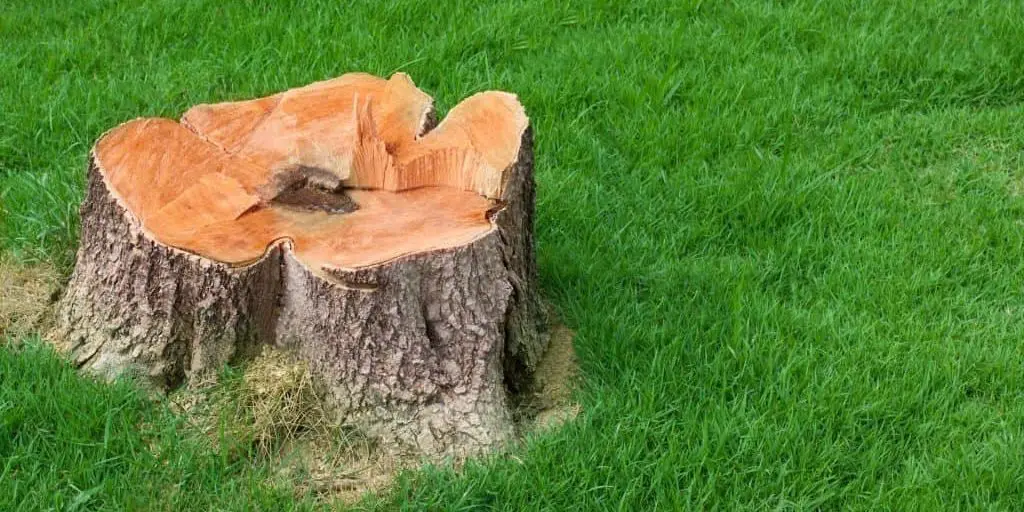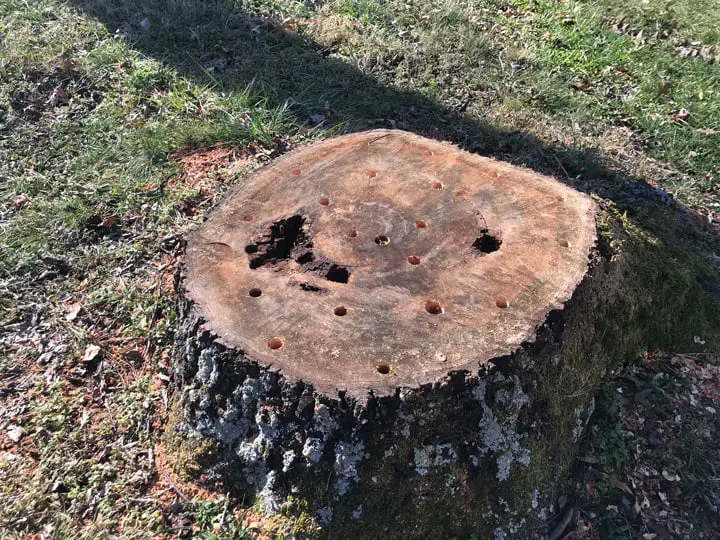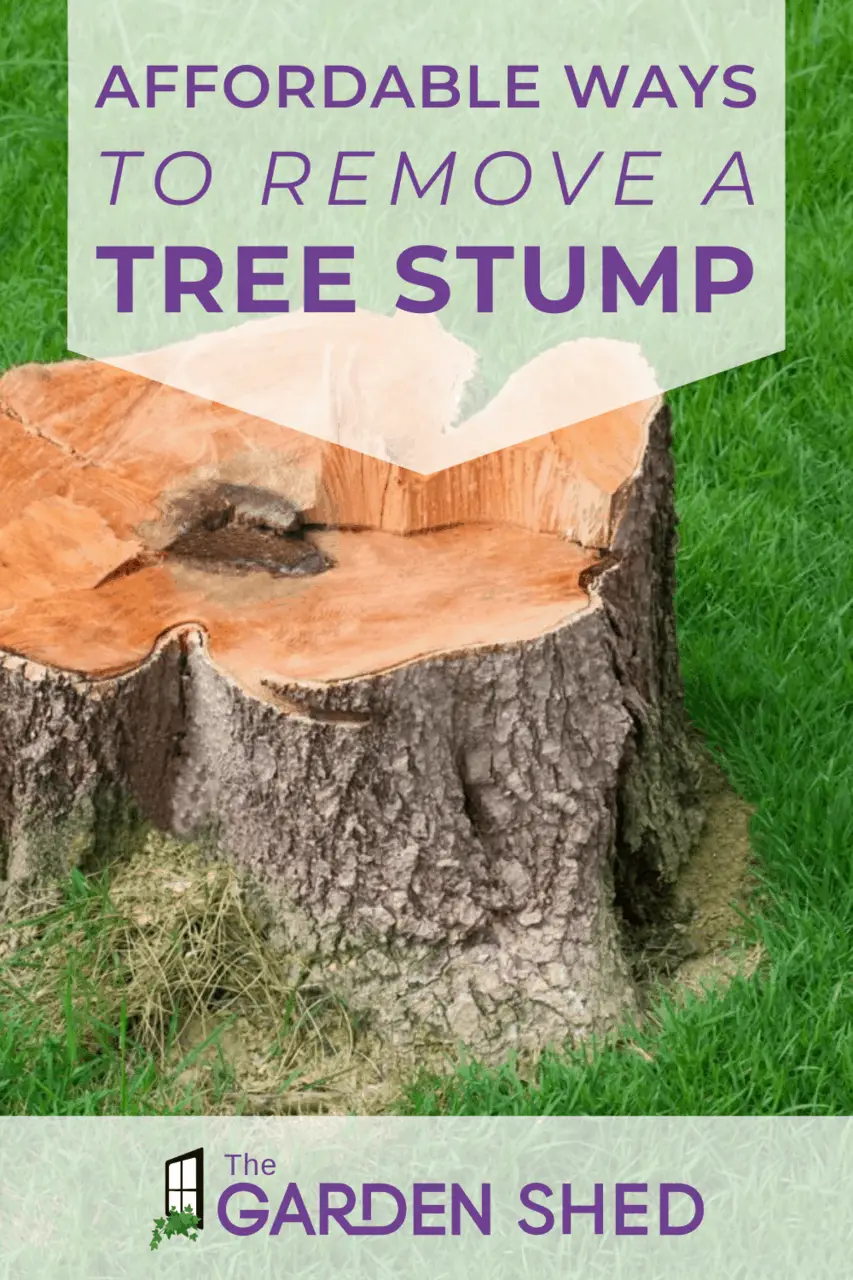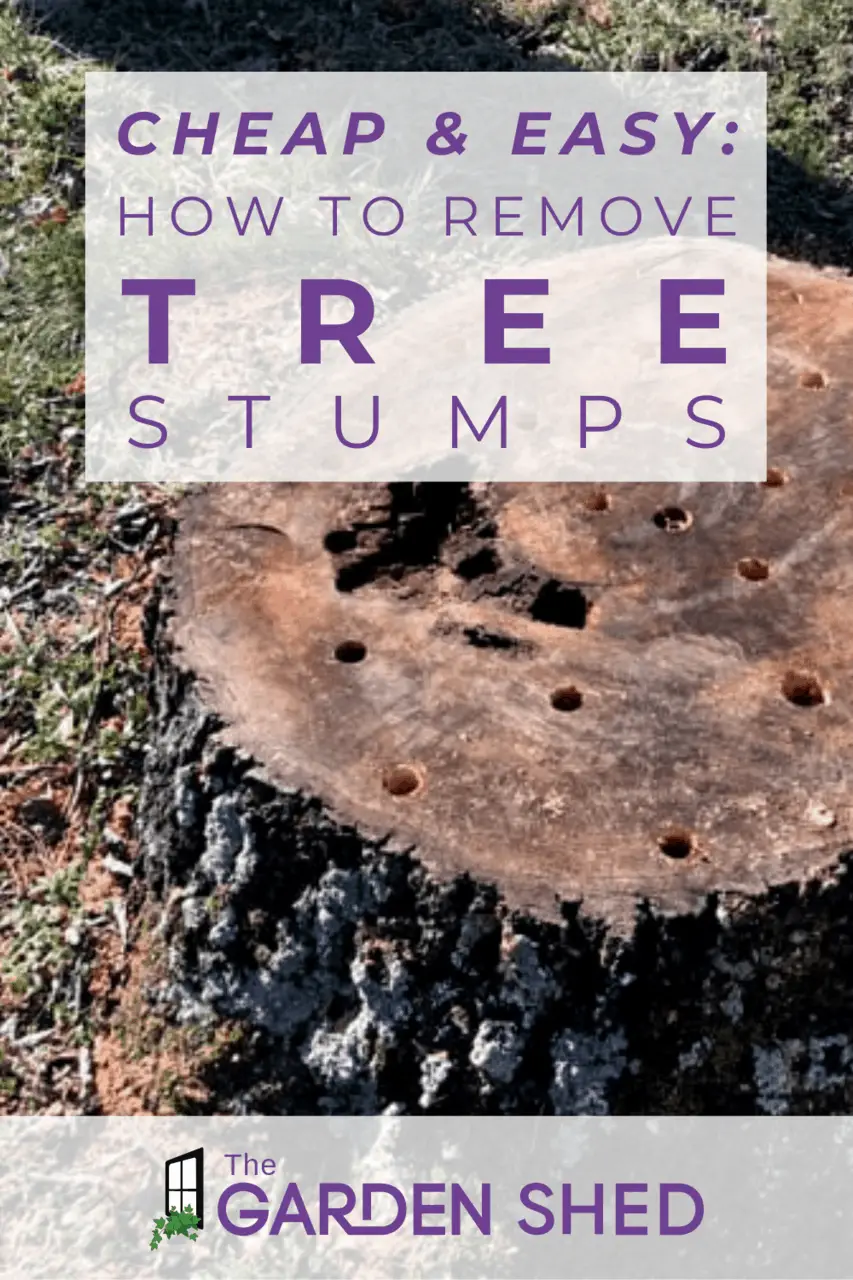
Affordable Ways to Remove a Tree Stump
Need to remove a tree stump in your yard but don’t want to spend a lot of money? You may have to look no further than products typically found in your home or garage.
The Reality of a Wooded Lot
Everyone loves a home surrounded by trees. Unfortunately, the reality of a wooded lot is eventually those trees will die from old age, a lighting strike, disease, or wind damage. When that happens, we are left with an unsightly stump in our yard. Removing tree stumps through a tree service or renting a stump grinder can be costly. Fortunately DIY stump removal is affordable and fairly easily if you have some patience. Three of the easiest and most affordable ways to remove a tree stump include the use of Epsom salt, light depravation, and controlled burning.
Epsom Salt to Remove a Tree Stump
Reduce the size of the stump. With a chainsaw, cut the tree stump as close to the ground as possible. If you don’t have a chainsaw, perhaps you can ask a neighbor to accomplish this task. Especially if that neighbor needs some firewood. In short, the smaller the tree stump, the easier it will be to remove.

Drill holes in the stump. Next, drill several holes in the stump. The picture above has 3/4″ holes but the website familyhandman.com suggests using a one-inch spade bit with a spade bit extension. Just keep in mind that 1″ holes will be harder to drill. Drill evenly spaced holes on the surface of the stump about every 6 to 8 inches apart. Ideally, drill the holes 10 to 12-inches deep. On a large stump (two to three feet in diameter) drilling 10-15 or more holes will help to speed up the process. Be careful to note that it is not uncommon for the drill bit to get caught in the stump and the torque of the drill can injure your wrist if the bit is stuck and the actual drill handle trys to spin. Be careful to use both hands if possible and experiment slowly with a few holes before moving on to the next.
Add Epsom salt. In a bucket, mix 100 percent Epsom salt with enough water that you can pour the solution. Once the Epsom salt is thoroughly mixed with the water, pour the mixture into all the holes. Some will pour dry Epsom salt into holes first, and pour some water over the holes so it soaks into the holes without washing away the salt. For best results, fill the holes completely. The website gardenandhappy.com suggests sealing the holes with wax from a plain candle. Simply light the candle and drip the melting wax into each hole to seal the hole and keep the Epsom salt from being diluted with rain.
How long will it take? Depending on the size of the stump, this method can take from two to six months for the root system to decay. Check on the holes monthly and add more Epsom salt as needed. To speed the process, use a pickaxe to chip away rotting wood every month before adding more Epsom salt.
Epsom salt versus rock salt . In addition, rock Salt (used to melt ice on walkways and roads) can be used to remove a stump in the same manner as Epsom salt, but Epsom salt is more effective.
Light Depravation to Remove a Tree Stump
Light depravation kills plants. Have you ever forgotten and left something on your grass such as a garden hose? Before long, the grass below the hose will start to die. In the same manner, you can remove a tree stump by depriving it of light. For instance, simply use a tarp or heavy trash bags. Be sure to use a dark trash bag or tarp to block the sunshine. After covering the stump with the tarp or bags, wrap it with bungee cords to keep your covering in place. Combining covering the tree stump with the Espom salt method above will prove even more effective.
Controlled Burning to Remove a Tree Stump
Dry stumps are the easiest to burn. Therefore, this method works best on tree stumps that are older. If the stump is too green, it will be difficult to light and will emit a great deal of smoke. Older stumps are easier to ignite and also emit less smoke.
Check with the local authorities. Call your fire department and ask if there are burning bans or restrictions in your area. These vary by state, area, and even time of year.
Prepare your surroundings. Don’t burn trees that are close to buildings or anything else that might be flammable. In other words, be proactive and remove flammable items before starting any fire. Mow the grass around the tree stump. Long grass can catch fire easily. Use your hose to wet down the area surrounding the tree stump. To be safe, you need at least ten to twelve feet between the tree stump and any other flammable object. If you don’t have that much space, use an alternative method.
To be extra safe, remove a circle of grass around the tree so that dirt surrounds the stump. This will greatly reduce the risk of fire spreading into your lawn.
Add flammable material to the stump. Use a chainsaw to make a deep “x” in the tree stump. If you don’t have a chainsaw, you can also drill deep holes into the stump. Fill the “x” or the drilled holes with kerosene. Do not use gasoline. Kerosene lights slower and, therefore, is safer to use as an accelerant. In this order, add some paper, small twigs, and then small and dry pieces of wood to the top of the stump. Light the paper on fire and stand back as the fire spreads to stump. Keep the fire burning as long as possible by adding more small pieces of firewood or dry branches as the fire dies down.
Surround the Tree Stump with a Metal Barrel. Alternatively, if you have a fifty-five-gallon barrel, the website hunker.com suggests removing both ends of the barrel and dropping it over the stump. After doing so, add some small dry wood to the barrel, some short dry branches, and a bit of paper. Place the paper on the bottom, then the branches, and then the small pieces of wood. Finally, light the paper to ignite. Add wood to the fire as needed. This is a great way to contain the fire and speed the process of burning the stump.
Be Prepared to Wait.
In conclusion, whether you decide to remove a tree stump with Epsom salt, light depravation, or by burning, none of these methods are quick. All three, however, are relatively inexpensive and fairly easy to accomplish.







